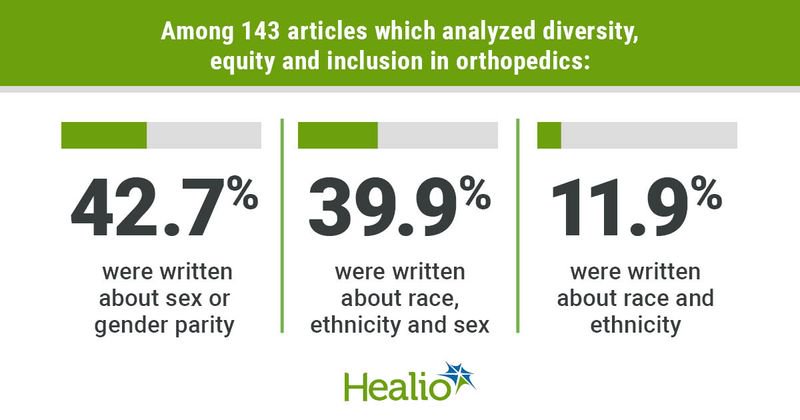Diversity, equity and inclusion research has increased in orthopedics in last 25 years
Key takeaways:
- Research on diversity, equity and inclusion in orthopedics has increased significantly in the last 25 years.
- Most authors were women.
- Most articles studied gender parity.
Research on diversity, equity and inclusion in orthopedics has increased in the last 25 years, with significant growth from 2018 to 2022 and most authorship done by women, according to published results.
Desiree E. Ojo, MPH, MPA, and colleagues used PubMed, MEDLINE, EMBASE and Scopus databases, as well as the Cumulative Index to Nursing and Allied Health Literature and Education Resources Information Center, to examine trends in research on diversity, equity and inclusion (DEI) in orthopedics. They analyzed 143 orthopedic-specific articles, which were conducted in the U.S. and published from Dec. 31, 1998, to Dec. 31, 2022.

Ojo and colleagues noted significant growth in DEI research during the past 25 years, with five articles published in 2018; 17 articles published in 2019; 25 articles published in 2020; 34 articles published in 2021 and 30 articles published in 2022.
Overall, 52.4% of authors (n = 75) were women and 44.1% (n = 63) were men. In addition, 42.7% of articles (n = 61) were written about sex or gender parity, 39.9% (n = 57) were written about race, ethnicity and sex and 11.9% (n = 17) were written about race and ethnicity. Researchers noted 10 articles were affiliated with Washington University in St. Louis, with no other institution publishing more than four articles.
“Although the number of articles written since 1999 in this domain has more than quadrupled in output, there is substantial room to grow in the areas of race/ethnicity and inclusion within the specialty,” Ojo and colleagues wrote in the study. “Efforts from all involved, including specialty and advocacy organizations, institutions and journals, are heavily appreciated to navigate the best strategies to fill this void and encourage equal representation within orthopedic surgery,” they concluded.

